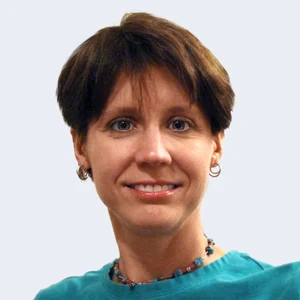




 Chris Carroll is Director of Product Marketing at Acrolinx.
Chris Carroll is Director of Product Marketing at Acrolinx.
 Mike Iantosca is Senior Director of Content Platforms at Avalara.
Mike Iantosca is Senior Director of Content Platforms at Avalara.
 Dipo Ajose-Coker is Product Marketing Manager at MadCap Software.
Dipo Ajose-Coker is Product Marketing Manager at MadCap Software.


André Schlotz is VP Global Automotive and Manufacturing Solutions, RWS Group. He helps organizations to digitalize their content supply chain through structured content authoring, component content management and single source content delivery. Before joining RWS in 2013 he was holding various management positions in manufacturing companies in product development, aftersales, process organization and IT. He has more than 20 years of experiences in process consulting, planning, building and running digital industry solutions.
 Hareesh Kanakaswamy is the Portfolio Manager of Digital Services Solutions at Sandvik Mining and Construction G.m.b.H. With 14+ years of experience in product development and aftermarket operations, he specializes in constructing end-to-end digital ecosystems for servitization strategies. Hareesh is a firm believer in innovation as the key to sustainable progress for humanity.
Hareesh Kanakaswamy is the Portfolio Manager of Digital Services Solutions at Sandvik Mining and Construction G.m.b.H. With 14+ years of experience in product development and aftermarket operations, he specializes in constructing end-to-end digital ecosystems for servitization strategies. Hareesh is a firm believer in innovation as the key to sustainable progress for humanity.
 Harald Stadlbauer, MD is General Manager of the NINEFEB Group of companies, dedicated to the advancement of Technical Communication, like Technical Documentation as well as eLearning to the intelligent delivery of it. He is actively engaged in developing iiRDS further as well as contributing to the AAS (Asset Administration Shell) sub-models of the IDTA (Industrial Digital Twin Association)
Harald Stadlbauer, MD is General Manager of the NINEFEB Group of companies, dedicated to the advancement of Technical Communication, like Technical Documentation as well as eLearning to the intelligent delivery of it. He is actively engaged in developing iiRDS further as well as contributing to the AAS (Asset Administration Shell) sub-models of the IDTA (Industrial Digital Twin Association)
 When should regression testing be performed?
Regression analysis of PDFs allows you to test system changes, changes to CMS, changes to stylesheet, changes to formatting software, and changes to graphic software.
Regression testing should take place anytime your system, hardware, or software changes to determine if what was correct in the output is still correct in output. Changes may result in content disappearing, incorrect formatting, changes to the integrity of images and tables, and many other (sometimes subtle) issues that invalidate the reliability of the document.
Antenna House Regression Testing System is for Automated – Fast – Accurate PDF to PDF & Image to Image Visual Comparisons
When should regression testing be performed?
Regression analysis of PDFs allows you to test system changes, changes to CMS, changes to stylesheet, changes to formatting software, and changes to graphic software.
Regression testing should take place anytime your system, hardware, or software changes to determine if what was correct in the output is still correct in output. Changes may result in content disappearing, incorrect formatting, changes to the integrity of images and tables, and many other (sometimes subtle) issues that invalidate the reliability of the document.
Antenna House Regression Testing System is for Automated – Fast – Accurate PDF to PDF & Image to Image Visual Comparisons
Presented by Michael Miller

Michael Miller is Vice President of Antenna House, Inc., a company that has developed one of the leading standards‐based (XSL‐FO and CSS) document formatting software products on the market today. Michael has a degree in Printing Engineering and Management and has been involved in high‐end composition, document formatting, and document management for over 40 years. He has an extensive background with structured data, including SGML, XML, S1000D, and DITA. During his career, he has worked in Europe and North America and has been involved in the implementations of some of the largest fully automated publishing and document formatting projects.

DITA is a fantastic tool for authoring efficiency and content management. It might as well be the keystone for outstanding content experiences, like content personalization and multi-channel delivery. But caution! What was thought for content creation is not always the right fit for modern content publishing.
Drawing from his experience as a content expert and senior consultant at Fluid Topics, Gaspard Bébié-Valérian will address in this webinar the specifics for content delivery of two key elements, metadata and granularity, and how to enrich and optimize them to build exceptional experiences with your DITA content.
Don’t miss the opportunity to delve into practical use cases encountered during real-life implementations and gain insights to enrich your own content strategy."
Presented by Gaspard Bébié-Valérian



For years, the focus of our content strategy has been on crafting messaging for human audiences, leveraging personas, controlled vocabulary, and tone. However, with the rise of Artificial Intelligence (AI) as a new audience, our approach must evolve. How does this shift impact our writing, and how can we create content that resonates with humans while effectively training AI systems? Can the same content achieve both goals and does it hinge on our AI usage intentions? Join Leigh White in this thought-provoking webinar as she delves into the necessary considerations for how we must rethink our approach if we want to use our content to teach the machines to teach us.
Presented by: Leigh White, MadCap Software

Crafted for technical writers, savvy documentation managers, and stakeholders looking to innovate, this webinar aims to dissect how AI is reshaping the creation, management, and delivery of technical content. Attendees will learn how to leverage AI for more than just efficiency, with a focus on enriching content quality, enhancing user engagement, and informing content strategy with data-driven insights. Join Dipo as he encourages participants to delve into the optimal positioning of AI as a fundamental component of their technical communication toolkit, with the ultimate goal of redefining the boundaries of technical writing and documentation management.
Presented by: Dipo Ajose-Coker, MadCap Software
 Much has been said about AI writing content, but what about reading it? What unique benefits does Generative AI provide for users to utilize and leverage your content? Actually, some of the most profitable GenAI use cases are related to the transformation of content delivery.
In this webinar, we will explore successful initiatives in GenAI-augmented Content Delivery, from search to reading experience, and personalized and automated question answering. We will showcase some examples of AI implementations in Fluid Topics’ content delivery platform, transforming product content and enterprise knowledge into exceptional user experiences.
Join Fabrice Lacroix, CEO of Fluid Topics, for an insightful session rooted in two decades of research and development in Large Language Models (LLM) and AI, along with recent AI projects within the industry.
Presented by Fabrice Lacroix
Much has been said about AI writing content, but what about reading it? What unique benefits does Generative AI provide for users to utilize and leverage your content? Actually, some of the most profitable GenAI use cases are related to the transformation of content delivery.
In this webinar, we will explore successful initiatives in GenAI-augmented Content Delivery, from search to reading experience, and personalized and automated question answering. We will showcase some examples of AI implementations in Fluid Topics’ content delivery platform, transforming product content and enterprise knowledge into exceptional user experiences.
Join Fabrice Lacroix, CEO of Fluid Topics, for an insightful session rooted in two decades of research and development in Large Language Models (LLM) and AI, along with recent AI projects within the industry.
Presented by Fabrice Lacroix


Delivery of tech docs often focuses on search — getting users to a good starting place. But users often have goals that a single page can’t cover. Serious tasks can require reference info, scenarios, and guidance. Users may need information in different media. Each user’s goal depends on their specific context, and they need to follow a unique path through the information. Writers cannot possibly design content for all of those users, with all of their unique paths.
Many of the ways that people have tried have failed. At various times, tech docs have relied more on search, or more on manual hyperlinks, or taxonomy. Pages have been long or short, other media have gone and come. Now AI offers easier ways to map content together, but even that’s not enough. Why?
Only a combination of techniques will give you the information model that you need. And the techniques on their own won’t get you all the way — you need an integrated design to bring your solution together. Learn how.
Key takeaways of this webinar will be: - The real needs of complex tasks for users, and how to map them to usable metadata. - What AI can do to suggest appropriate content — and what it can’t - How to design a suitable goal-enabling solution for your own organization’s needs
Join in with Joe Pairman, Director of Product Management, RWS Group and Jörg Schmidt, Senior Solutions Architect, RWS Group to find out more.
Presented by: Joe Pairman, Director of Product Management, RWS
Joe Pairman, Director of Product Management, RWS
Joe is Director of Product Management for Tridion. He is currently shaping strategic design for a more accessible and impactful product, drawing on his experiences leading teams and bringing structured content operations to tech companies, banks, and pharma companies.
 Jörg Schmidt, Senior Solutions Architect, RWS
Jörg has been working in multiple roles for different CCMS providers for more than 20 years. During that time, he has helped defining and implementing solutions in verticals like machinery, automotive, A&D - but also pharma & finance. Since 2013, he has been working for RWS as a Solution Architect.
Jörg Schmidt, Senior Solutions Architect, RWS
Jörg has been working in multiple roles for different CCMS providers for more than 20 years. During that time, he has helped defining and implementing solutions in verticals like machinery, automotive, A&D - but also pharma & finance. Since 2013, he has been working for RWS as a Solution Architect.

In this webinar, Dipo Ajose-Coker offers a step-by-step guide to understanding and implementing structured authoring and DITA, highlighting the benefits such as improved content reuse, consistency, and efficient multichannel publishing.
Structured authoring and DITA represent a strategic shift towards more efficient and effective content management. The session begins with an introduction to structured authoring and DITA, focusing on the benefits of this methodology, including enhanced content reuse, improved consistency across documentation, and streamlined localization processes.
Attendees will gain insights into the best practices for implementing structured authoring and DITA within their organizations, including tool selection, team training, and workflow design. The session also offers practical strategies for overcoming common challenges associated with implementing structured authoring and DITA.
In summary, participants will leave the session equipped with valuable insights and practical strategies to implement structured authoring and DITA for achieving greater content agility and operational efficiency:


This webinar explores an innovative solution: Semantic RAG, which harnesses the power of knowledge graphs, large language models (LLMs), and graph databases to enhance semantic retrieval and generation capabilities.
A key focus will be on LLM-derived knowledge graphs, demonstrating how they can be created and refined with human-in-the-loop processes to achieve greater accuracy and explainability. We'll explore memory constructs in Graph RAG operations, illustrated through practical demonstrations using PoolParty and GraphDB.
We will dive into a real-world case study and explore the pipeline, architecture, and practical applications of Semantic RAG systems. This will showcase valuable insights into the seamless collaboration between PoolParty and GraphDB to deliver a robust Semantic RAG solution. Expert strategies will be shared for maximizing the impact of these innovative technologies by shortening time to insight, providing savvy querying for the untrained, and lowering long term maintenance costs.
Márcia Ferreira, Data and Knowledge Engineer (Technical Consultant) at Semantic Web Company, and Krasimira Bozhonova, Solutions Architect at Ontotext, will walk you through the following aspects and explain the benefits of a Semantic RAG approach:
Vector RAG vs. Graph RAG
Grounding LLMs with Graph
Conventional RAG vs. Semantic RAG
Different varieties of Graph RAG
Demo of PoolParty Semantic RAG and GraphDB
In the meantime, have a look at our Semantic Retrieval Augmented Generation page to learn more about the capabilities and benefits of utilizing Knowledge Graphs to power your Generative AI experience.
We hope to see you there!
Presented by: Márcia Ferreira, Semantic Web Company Márcia R. Ferreira is a Data and Knowledge Engineer (Technical Consultant) at Semantic Web Company. By implementing state-of-the-art semantic systems, Márcia ensures customers' data requirements are met at the highest level. She is interested in integrating LLMs with graph technologies for impactful applications in knowledge-intensive industries.
Krasimira Bozhanova, Ontotext
Márcia R. Ferreira is a Data and Knowledge Engineer (Technical Consultant) at Semantic Web Company. By implementing state-of-the-art semantic systems, Márcia ensures customers' data requirements are met at the highest level. She is interested in integrating LLMs with graph technologies for impactful applications in knowledge-intensive industries.
Krasimira Bozhanova, Ontotext
 Krasimira Bozhanova is a Solutions Architect at Ontotext, starting her way as a developer and contributing to many of the company's significant client projects. In recent years she has been a part of the AI in Action Ontotext initiative which puts Ontotext products at the heart of various AI applications.
Krasimira Bozhanova is a Solutions Architect at Ontotext, starting her way as a developer and contributing to many of the company's significant client projects. In recent years she has been a part of the AI in Action Ontotext initiative which puts Ontotext products at the heart of various AI applications.